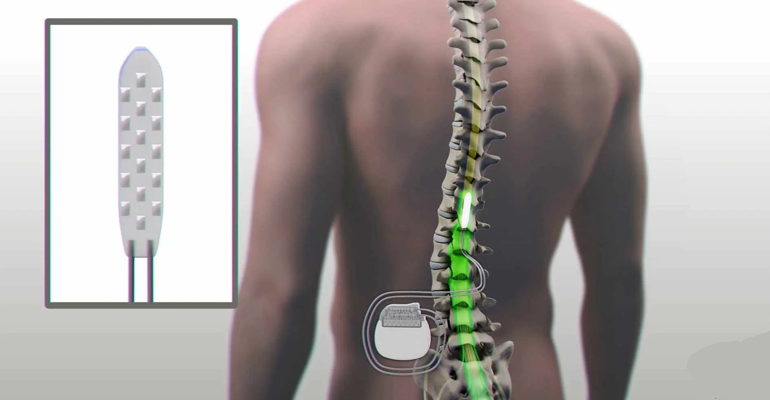

Spinal cord stimulation (SCS) is a neurostimulation technique used to manage chronic pain, particularly neuropathic pain conditions that have not responded well to other conservative treatments. This procedure involves the implantation of a device that delivers electrical impulses to the spinal cord, interfering with the transmission of pain signals to the brain. SCS is commonly used for conditions such as failed back surgery syndrome, complex regional pain syndrome (CRPS), and certain neuropathic pain syndromes. Here's an overview of spinal cord stimulation for pain:
Indications:
Failed Back Surgery Syndrome (FBSS): Persistent or recurrent pain after spinal surgery.
Complex Regional Pain Syndrome (CRPS): Chronic pain condition often affecting an arm or a leg.
Neuropathic Pain: Pain resulting from nerve damage, injury, or dysfunction.
Trial Period:
Prior to permanent implantation, patients typically undergo a trial or screening period.
During the trial, a temporary electrode is placed in the epidural space near the spinal cord, connected to an external stimulator. This allows the patient to assess the effectiveness of SCS in relieving their pain.
Permanent Implantation:
If the trial is successful and provides significant pain relief, a permanent SCS system may be implanted.
The permanent system consists of a small generator (similar to a pacemaker) implanted under the skin, and one or more leads with electrodes are placed along the spinal cord.
Stimulation Parameters:
The implanted device can be programmed to deliver electrical impulses with specific parameters, such as frequency, pulse width, and amplitude.
Adjustments can be made to optimize pain relief and minimize side effects.
Mechanism of Action:
SCS is thought to modulate pain signals by creating a tingling or buzzing sensation (paresthesia) that interferes with the perception of pain.
Additionally, SCS may influence the release of neurotransmitters in the spinal cord, affecting pain processing.
Potential Benefits:
Reduction in pain intensity and improved quality of life.
Decreased reliance on pain medications.
Enhanced functional abilities and increased physical activity.
Considerations and Limitations:
SCS is not suitable for all types of pain, and careful patient selection is crucial.
The level of pain relief can vary among individuals, and some may experience partial rather than complete relief.
Complications may include device-related issues, lead migration, or infection.
Spinal cord stimulation is considered a valuable option for managing chronic pain, especially when other treatments have been unsuccessful. The decision to undergo SCS is typically made in collaboration between the patient, pain management specialists, and neurosurgeons. Regular follow-up appointments are essential to monitor the effectiveness of the therapy and make any necessary adjustments to the stimulation parameters.